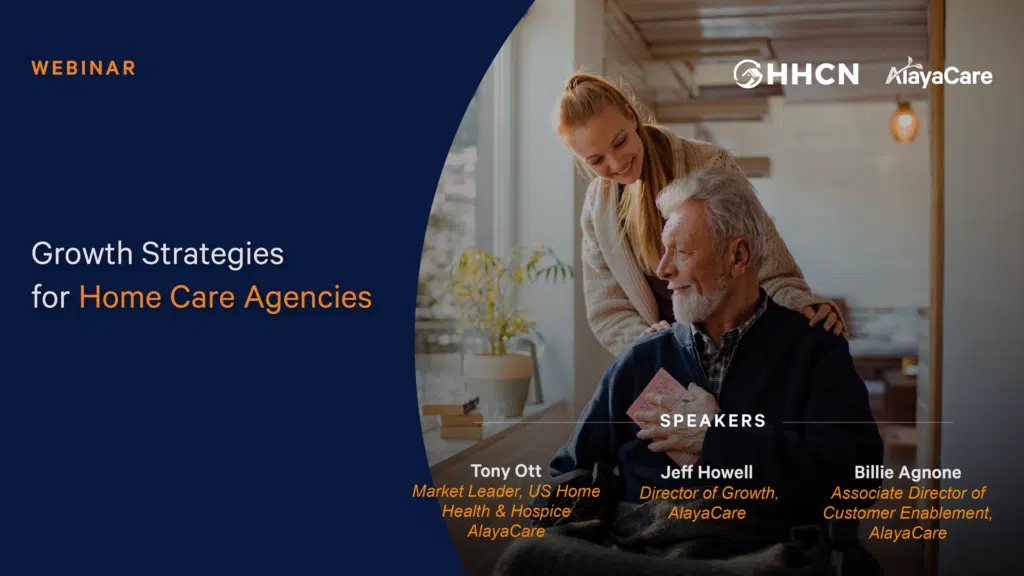Blog
5 Tips for Improving your Client’s Home Care Experience

Like many other industries, the home care industry is beginning to put the consumer at the core. Care models are becoming increasingly client-centric, meaning customer service will be hands-down the most important role at your home care agency. This is especially true considering the increasing demand for home healthcare services; clients will be attracted to, and stay with, providers who offer an efficient and effective, consumer-centric experience.
Putting in place a strategic plan to tackle your customer service issues, rather than doing the bare minimum to deal with client concerns and complaints, you will put yourself ahead of your competitors and be top-of-mind when it comes to client referrals.
With the right approach, impeccable customer service can build brand loyalty, increase awareness of your agency in the market, and most importantly earn the trust of both your current and prospective clients.
With that in mind, here are 5 tips that your home care agency can use today to help you create a customer service experience that your clients won’t forget:
1) Be available and respond promptly
Avoid using automated tools to answer client complaints or requests. There are several customer service tools and platforms that enable you to interact with your clients as soon as possible.
Consider implementing a live-chat on your website that allows your employees to respond to customer service requests in real-time, or using your home care software platform to connect clients with their care workers through stakeholder portals. The sooner you answer your clients’ concerns the more likely you are to build trust and loyalty with them.
2) Listen to your clients
Consumer directed care means the clients have the flexibility and power to choose when, where and by whom they receive home care services. While they may need some direction and guidance, it’s important to make sure you really account for their wants and needs.
When creating a client-centric care plan, take into consideration the client’s personal goals and use your home care software platform to closely monitor their status and align their care plans accordingly.
“You have to create something that’s maximum flexibility for both the patient, for that personalized experience of as well, the care provider.” – John Kunyszh, HomeHealth360 Episode 9
Clients want to have a greater degree of choice and participation in their care services, so the more you listen and acknowledge their needs, goals, and preferences, the more likely they are to have a memorable home care experience.
3) Be on time
One of the most common complaints received in the home care industry is late and/or missed visits.
Implementing a home care software solution that includes electronic visit verification and real-time updates can ensure that your providers clock in and out of their visits as scheduled.
This gives you a visibility into the situation so you can respond or take action to inform clients accordingly. Aside from customer service, missing a visit could have severe consequences for your clients, so it’s important to keep your clients as informed as possible.
4) Keep the family connected
According to the National Alliance for Caregiving in the United States and StatsCan in Canada, over 61+ million men and women are family caregivers across North America.
When your client is receiving home care services, there is a good chance that there’s a family member or friend who would like visibility in their care plan to ensure services are being delivered accordingly.
A high volume of customer service calls and emails to home care agencies come from friends and family members requesting more information, which is time-consuming for your employees.
Agencies who supply key stakeholders with online portals that allows access to information such as their loved one’s schedule and care plan notes, can increase transparency and reduce the amount of customer service calls flooding your agency.
5) Use your data
Most home care software solutions today could capture copious amounts of data.
With electronic notes and clinical documentation, you can capture how your employees are performing and valuable feedback from your clients.
This will help you adjust your customer service strategies, and keep you informed on how your staff can create more client-centric experiences. With more advanced tools such as machine learning solutions, you can also collect valuable data on your clients’ health and vitals.
“In terms of tactical advice [for home care recruitment challenges] look at your data, see what has worked in the past and try and help that to make decisions in the future…so trying to be as data driven as possible will really help to make sound decisions for the future. Another tactical advice is trying give employees the best technology you can to make their jobs easier, so help to support them, give them decision support tools to make everything very easy so they can have mobile solutions.” – Naomi Goldapple, VP of AlayaLabs, at HHCN Webinar 2022.
These tools enable data-driven support, allowing your care providers to make faster, more informed decisions in the field, which can improve clients’ overall experience.
The most memorable customer service experiences occur when organizations go beyond to accommodate their clients. Extraordinary gestures not only help the clients they intend to, but they give them a remarkable story to share about your brand. Great customer service comes from a genuine desire to help your clients.
Implementing a combination of the tools and tactics above, while also encouraging your staff to think about home care visits as an experience will easily make you stand out from your competitors.
Download the guide below to find out how you can start improving your client experience:




